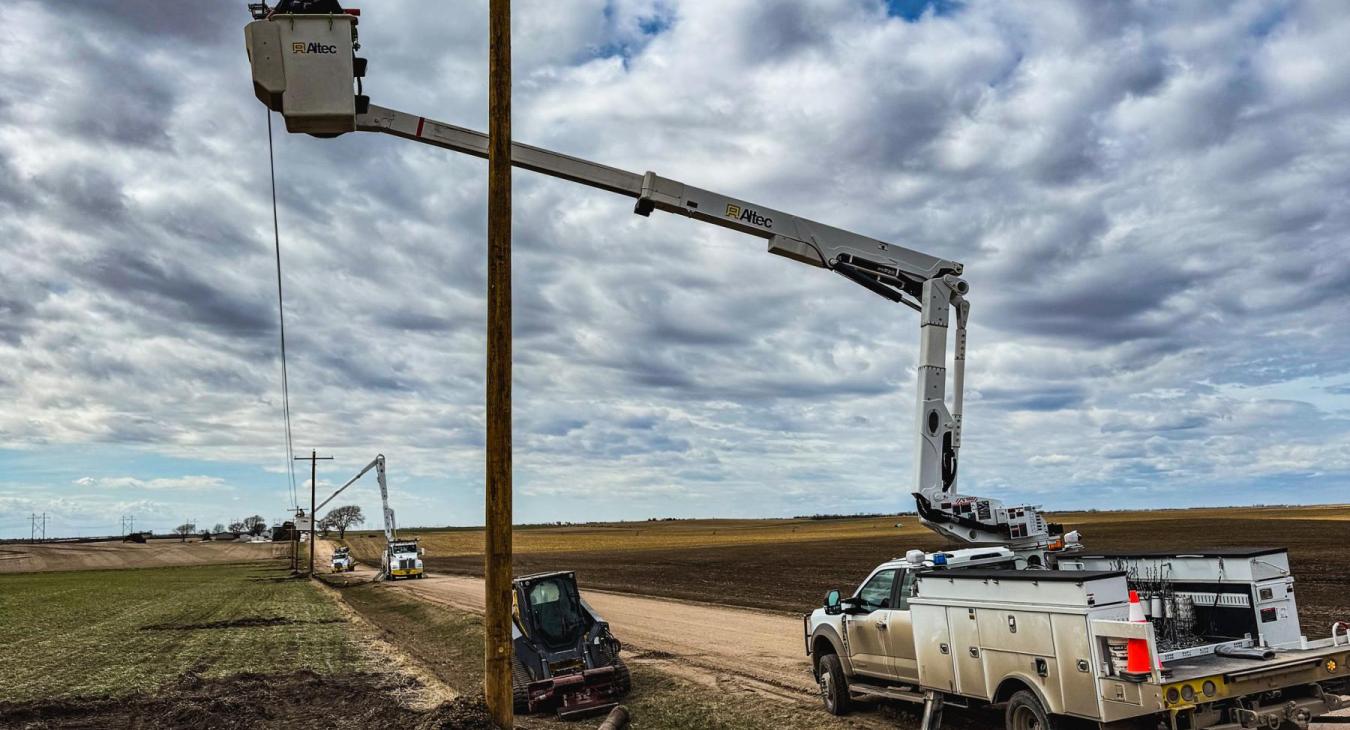By Scott Flood
When lineworkers are perched in a bucket truck, repairing power lines along a busy road, they have good reason to be concerned about their safety. However, most are less apprehensive about problems like working with high voltages or falling. Their biggest worry is also the most unpredictable: a distracted driver slamming into their vehicle or a nearby power pole.
The National Safety Council reported that 891 people were killed and 37,701 people were injured in work zone crashes during 2022 (the most recent statistics). Most of those crashes occur in construction sites, which are usually well-marked. Public power districts and electric cooperative crews are likely to face even greater danger, as they are often working alone along remote stretches of roads, frequently in heavy rain or other adverse weather conditions that can reduce their visibility.
The danger of work zone crashes led every state to adopt “move over” laws that require drivers to lower their speed and switch lanes when possible to protect emergency vehicles. The goal is to provide an added safety buffer and minimize the potential for accidents. Drivers caught violating the laws can face penalties such as significant fines.
Nebraska law requires drivers to slow down and move into another lane that is at least one moving lane apart from the stopped vehicle, and be prepared to stop. This includes any stopped vehicle operated by a towing or vehicle recovery service, a Nebraska State Patrol motorist assistance vehicle, a publicly or privately owned utility maintenance vehicle, a highway maintenance vehicle, or a vehicle operated by a solid waste or recycling collection service, which is stopped and displaying strobe or flashing red, yellow, or amber lights, shall, unless otherwise directed by a law enforcement officer.
Compounding this issue is the dramatic increase in distracted driving. The National Transportation Highway Safety Administration has reported that as many as 1,000 Americans are injured each day because of activities that take drivers’ attention away from the road. The most common is reading and responding to text messages. If a driver traveling at 55 miles per hour glances at their phone for just five seconds, they’ll have traveled the length of a football field before returning their gaze to the road.
The design of today’s vehicles contributes to distraction. Many vehicles have complex controls for entertainment and climate that demand the driver take their eyes off the road to make even simple adjustments.
Geography can also be a factor. Electric utilities serving rural and remote areas often have power lines along twisty and hilly roads. Locals accustomed to driving those roads at fairly high speeds may be startled and have little time to react when they encounter a work crew past a hill or around a curve.
Besides the potential for lineworker injuries, accidents can also damage or destroy expensive service vehicles, reducing a utility’s ability to respond to outages and other problems. Power poles and other infrastructure may also suffer severe damage.
Additionally, many of the tasks performed by lineworkers, such as reconnecting high-voltage power lines, are inherently dangerous and require their complete focus. When their attention is distracted by speeding or noisy vehicles, they’re more likely to make mistakes that can complicate the repair or cause injury.
Nor are rural electric utility employees at risk only when their vehicles are parked and repairs are underway. Lineworkers frequently have to drive slowly along the shoulder of roads to pinpoint broken power lines or failed transformers, especially in darkness or conditions that interfere with visibility.
Many state transportation agencies have work zone awareness programs. Amplifying those efforts by devoting part of a utility’s advertising, publicity and social media reminds rural electric utility consumers and other drivers of the importance of giving lineworkers a wide berth.

